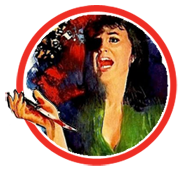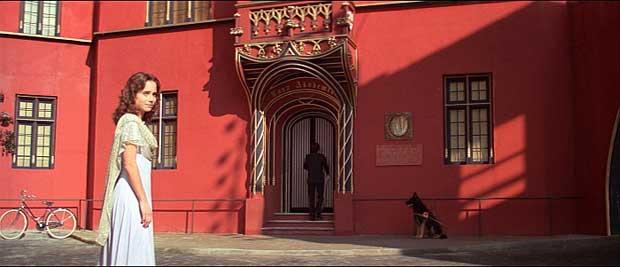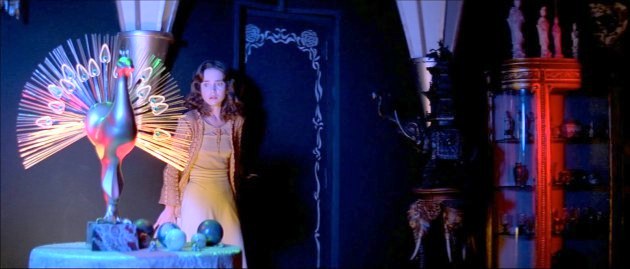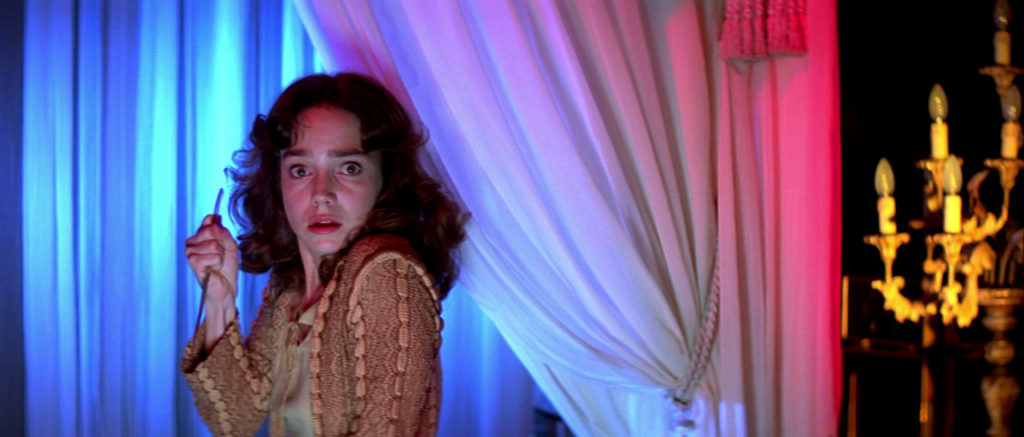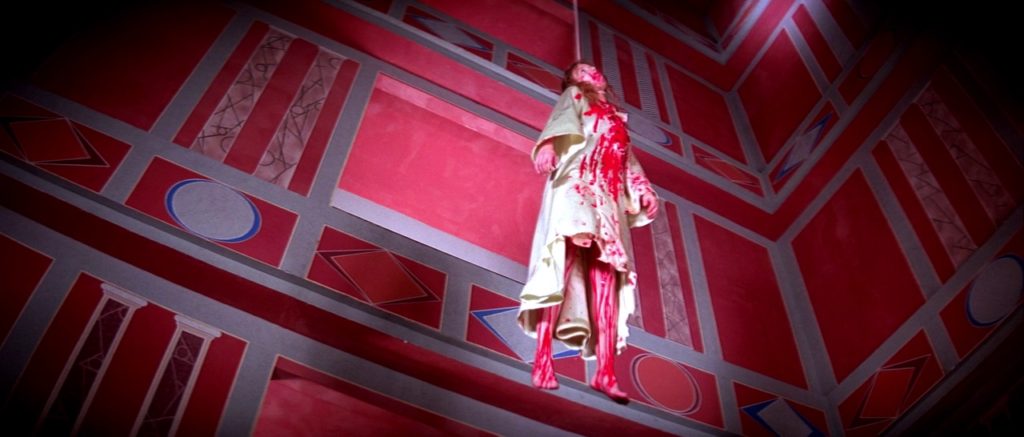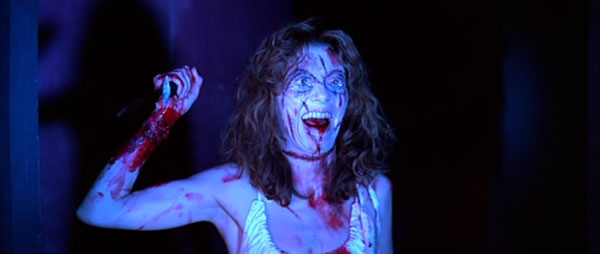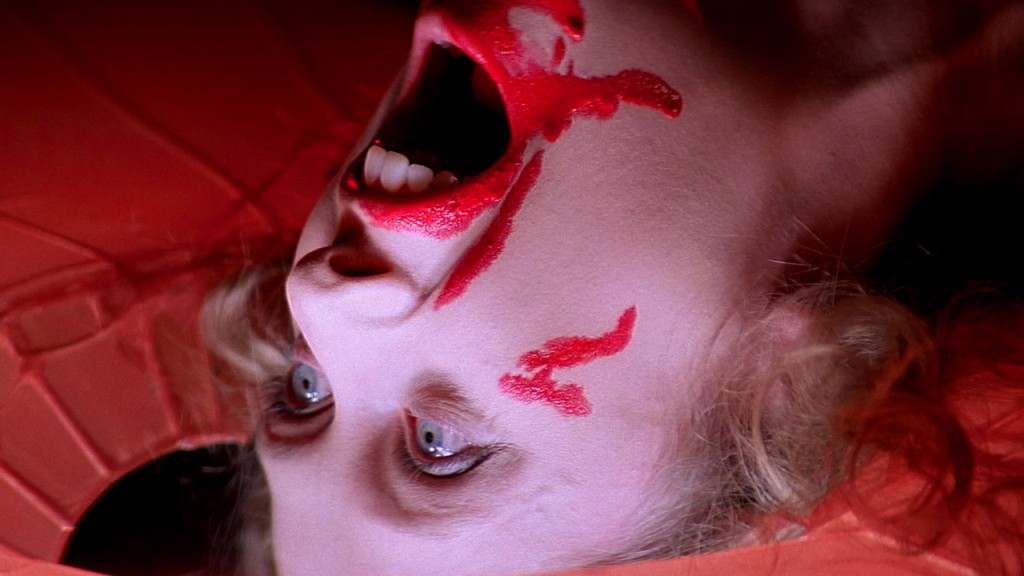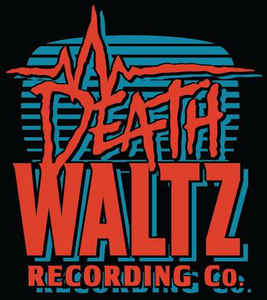Suspiria is a 1977 Italian supernatural thriller directed by Dario Argento. It is widely considered his piece de resistance. Critically acclaimed for it’s visual style as well as its soundtrack. It stars Jessica Harper as Suzy Bannion. Bannion, an American ballet student, attends a German ballet school only to become swept up in a whirlwind of bizarre killings. American leading lady and veteran screen actress Joan Bennett also stars as Madame Blanc the headmistress of the ballet academy.
Suspiria is the first film in Argento’s ‘Three Mothers Triology’. Inferno, released 3 years later would be a thematic sequel to Suspiria. Thirty years later in 2007 Argento would finally release his third and concluding film in the series Mother of Tears.
Suspiria was co-written by Daria Nicolodi. She has said that the story was inspired by a family tale about her grandmother running away from a dance academy after discovering they practiced black magic. Argento said he was inspired by trips he took through several European cities said to have magical pasts. Cities such as Turin Italy and Lyon France, as well as The Magical Triangle where Switzerland, France and Germany converge were of particular interest. The story of Rudolf Steiner was a specific influence. Steiner opened the Waldorf school in Stuggartt, Germany where Paganism and Satanism were said to be practiced. It was these places and the stories of the people who practiced magic there that would ultimately lead to Suspiria’s plot. Fairy tales such as Snow White and Alice in Wonderland were major influences on the visual style. The thematic and psychological elements were influenced heavily by Thomas DeQuincey’s Suspiria de Profundis.
Suspiria is considered a masterpiece of visual style. Argento worked with the cinematographer Luciano Tovoli to craft a surreal visual style with accentuated colors and lighting. Argento and Tovoli used the Technicolor process to achieve Suspiria’s stunning color palatte. Technicolor was at the time being replaced by Eastmanaolor and other single strip processes, but there was still a Technicolor facility in Rome. Argento grew up watching beautiful Technicolor films like The Wizard of Oz and Disney’s Snow White and the Seven Dwarves. It was this admiration that led him to use the then outdated and time consuming process. Tovoli’s experimentation with lenses and filters to achieve the color saturation and soft edges ultimately lead to a very surreal and stunning look to the film. Along with the strong visual style, the pacing and editing of Suspiria is widely considered some of the most refined and effective examples of such disciplines in film.
The music for Suspiria was also a critical success and integral to the overall atmosphere of the film. The progressive rock synth sounds form Goblin heightened the surreal imagery and themes set forth by Argento. Although the band Goblin has seen many members come and go, it was Claudio Simonetti, Fabio Pignatelli and Massimo Morante that made up the core trio of the group and its original founding members dating back to their first band Oliver in the earlier in the 1970’s. Suspiria is considered the band’s seminal work, even by the band members themselves.
Goblin had worked previously with Argento on Profound Rosso. With the soundtrack to Profound Rosso selling over one million copies in the first year as well as spending almost a year on the Italian hits charts, Argento decided to bring the band back to provide music on his next project Suspiria. After reading the script a demo was recorded and this music was said to have been used on set to help the actors with the mood of the film. The music for Suspiria as well as Profound Rosso is also considered to be the genesis of the 70’s/80’s horror synth sound. John Carpenter admits to being particularly influenced by the music of Profound Rosso.
Suspiria’s production was the typical Italian production of the era. Many actors of different nationalities would be cast in order to boost appeal across Europe and the US. Harper and Bennett were American actors Stefania Cassini and Flavio Bucci were Italian and others including Udo Kier, in one of his earlier roles, was German. This also presented a unique production practice in which none of the dialogue would be recorded on set. It was later dubbed through ADR in the different languages to be distributed throughout different markets. This was common practice in Italian cinema production of the time and led to each of the actors speaking their lines in their native languages even though the actors they were speaking with might not necessarily understand them. Harper recalls that this wasn’t too hard to get used to since each actor new their cues and when to hit their marks. Argento is noted as expressing some disappointment at the fact that Harper’s voice was not used in the Italian market as it was dubbed by an Italian voice actor.
I first discovered Suspiria through George A. Romero’s Dawn of the Dead. As many hardcore zombie fans know Argento, who befriended Romero in Italy in the 1970’s, ended up helping get Dawn of the Dead made. He put Romero up in his home while he wrote the script. His brother Claudio helped produce Dawn of the Dead, as well as distribute it in Europe. Argento also got music direction credits along with The Goblins whose soundtrack was used in the European version of the film.
Suspiria has been released in many versions over the years. Anchor Bay released it on DVD in 2001. Since then there here have been a few Blu Ray releases, most being released in Europe as region B discs and each using different restoration methods. Nouveax Pictures released a blu-ray in 2010 in the UK that was met with mixed feelings as the color timing was apparently tinkered with ending up with a picture which many considered not to be faithful to the original material. TLE films has also released a version in Germany which boasts another restoration from HD masters with access to 35mm references from the British Film Institute. I have read that this versions color palatte is closer to the original 35mm print.
The most recent release is by Synapse Films, who just put out an amazing restoration of Argento’s Tenebrae. This 4K restoration seems to be the definitive release to date. It has recived much praise from connoisseurs of Giallo and film in general.
